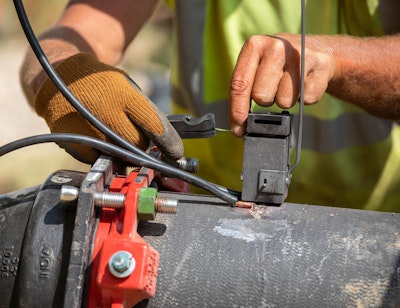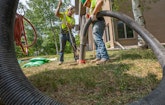
Nick Borns, principal engineer for water at the City of Sioux Falls, South Dakota, stands with a work crew behind him on a job site in Sioux Falls. (Photography by Jay Pickthorn)
Sioux Falls sits in the southeast corner of South Dakota. The Big Sioux River flows through the city, giving the city its name and giving residents a picturesque park setting where the water cascades down a series of rocky outcrops on its way south to a rendezvous with the Missouri...










